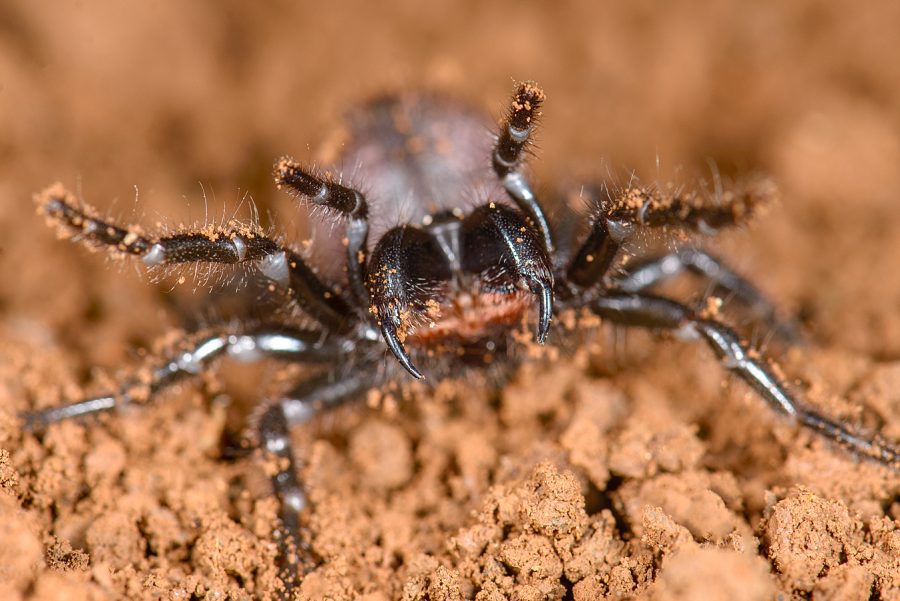Two venomous spider species — the funnel-web and mouse spiders — have recently been found to be more closely related than previously thought, according to a recently-published report from the Marshal Hedin Lab at San Diego State
The report — “Phylogenomic reclassification of the world’s most venomous spiders (Mygalomorphae, Atracinae), with implications for venom evolution” — looked at the Atrax robustus and Missulena species of spiders, better known as the funnel-web and mouse spiders. Funnel-webs are considered to be one of the most deadly species, while mouse spiders are dangerous but not necessarily lethal.
Venom proteins from the mouse and funnel-web spiders were studied and found to be similar in other studies, and antivenoms developed to treat victims of funnel-web bites have been effective on mouse spider bites.
After collecting subgenomic DNA from several species of spiders, it was determined that the two species are closely related, Hedin said.
“If it is the case that you have funnel-web and mouse and they are sort of closely related, relatively speaking, then all of the biological similarities that they have — like the venoms and the fact that the antivenoms work — it’s all just because they have a common ancestor,” Hedin said.
Through the study, the two venomous species — both native to Australia — were found to have been misplaced in the genetic tree, leading to reclassification.
“We kind of shook up the (phylogenetic) tree,” Hedin said.
Knowing that these species are closely related can lead to the development of an antivenom that treats victims of both spiders, Hedin added.
“If you know what the venom proteins look like in (each of) these taxa, then you can actually reconstruct the ancestral venom protein that would be found in the common ancestor,” he said. “Then you can actually make antivenoms that target that, so it would be sort of a more general purpose antivenom that work for all of these potentially dangerous spiders.”
Confirmation of this relationship between the funnel-web and mouse spiders was simultaneously surprising and expected, report co-author Shahan Derkarabetian said. Prior studies had indicated that the two species might be closely related, but results had never been 100 percent conclusive.
“The data we collected were able to provide enough support for this close relationship so we could say with certainty, yes, these two groups that the funnel and mouse spiders belong to are each other’s closest relatives,” Derkarabetian said.
Derkarabetian, a graduate from SDSU who recently joined Harvard University in a postdoctoral research position, said the team was able to use museum specimens for the research.
“What was most exciting for me was the ability for us to include specimens that have been sitting in museums for up to 30 years,” Derkarabetian said. “Typically for genetic analyses like this, you need fresh samples preserved specifically for genetic work, and most standard museum specimens are not preserved this way. The laboratory method we used allowed us to sequence these museum specimens and gave us a lot of very usable data.”
In addition to spider species, Hedin’s lab studies the diversity and evolution among other arachnid species.
Doctoral student Casey Richart focuses his research on millipedes and harvestmen — an order of arachnids that do not produce venom or silk.
Harvestmen and millipedes were some of the earliest species to live on the land, but their movement and disbursement is limited. Because of their early, evolutionary history, studying this order of arachnids allows researchers to test both older and more recent evolutionary and biogeographic hypotheses, Richart said.
“Since they don’t move, we can also ask very recent hypotheses — for instance, what were the effects of the last glacial maximum during the Pleistocene on these organisms,” he said. “I try to correlate what evolutionary scenarios affected their evolution.”












